The Wasatch Fault
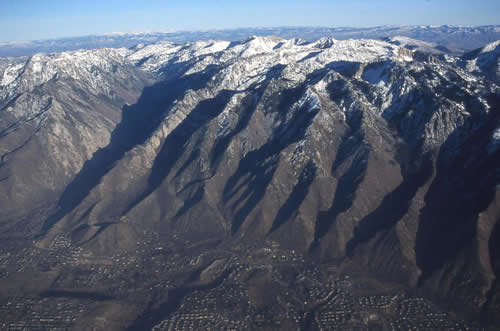
The rapid movement along this fault is a big part of the Alta experience. From the base of Little Cottonwood Canyon to the top of Mount Baldy you pass through eight separate climatic zones.They are: Most of Alta falls within the Englemann Spruce and Subalpine Fir Forest with thick stands of evergreens, beautiful meadows, babbling brooks […]
The Wasatch Fault
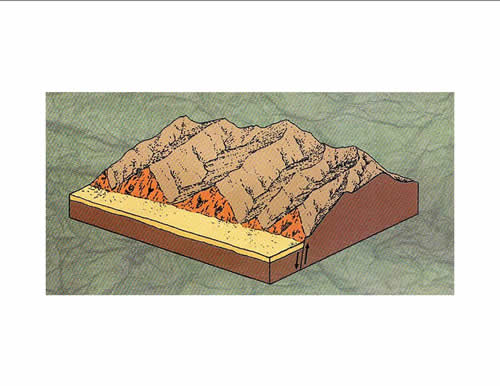
The Wasatch Fault is a high angle normal fault, dipping steeply to the west. The fault is active today, with at least 19 major earthquakes documented along the fault over the last six thousand years (UGS, 1996). Although there have been no recent large movements along the fault, evidence of potentially catastrophic earthquakes are well […]
The Wasatch Fault
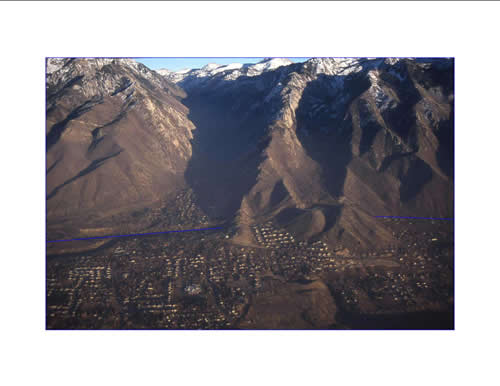
The most pronounced structural feature is the Wasatch Fault scarp that runs along the range front and is responsible for the uplift of the Wasatch Mountains. The mouth of Little Cottonwood Canyon is one of the most famous geologic locations in the world. Here a number of geologic features merge defining the recent geologic history […]
Folds, Faults and Fracture Systems
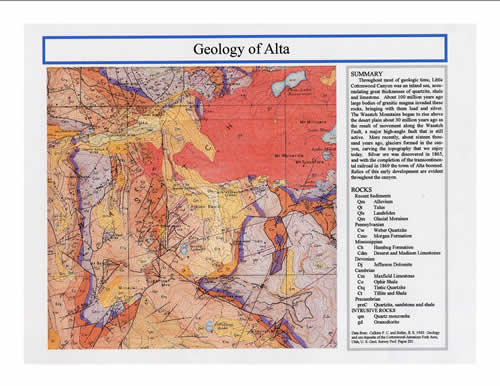
All rocks, including the Alta Stock, are cut by a vast network of near vertical northeast-trending fractures (note red lines on the Geologic Map of Alta). These fractures more or less run parallel to Little Cottonwood Canyon. Note red lines
Folds Faults and Fracture Systems
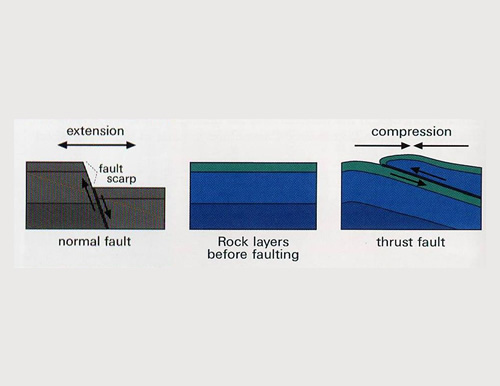
Examples of different fault movements are shown. The relative movement along normal faults and thrust faults are depicted in this illustration. The relative motion of reverse faults is opposite to normal faults. Source UGS, 2008.
Folds, Faults and Fracture Systems
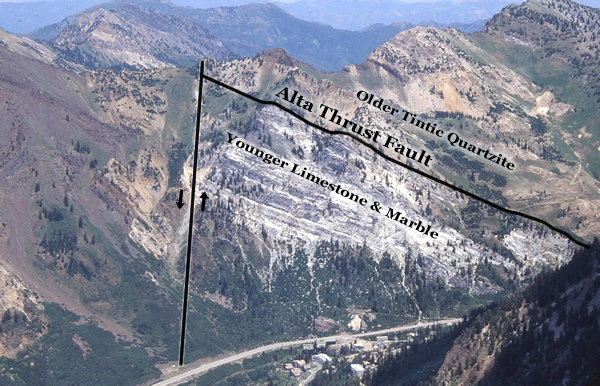
Compression also caused low-angle thrust faults emplacing older rocks on top of younger ones. The largest of these thrust faults, the Alta Thrust, runs up the east side of Collins Gulch and has shoved the Tintic Quartzite atop much younger limestones. Much of the complex structural geologic history of Alta is visible in the Hellgate […]
Folds, Faults and Fracture Systems
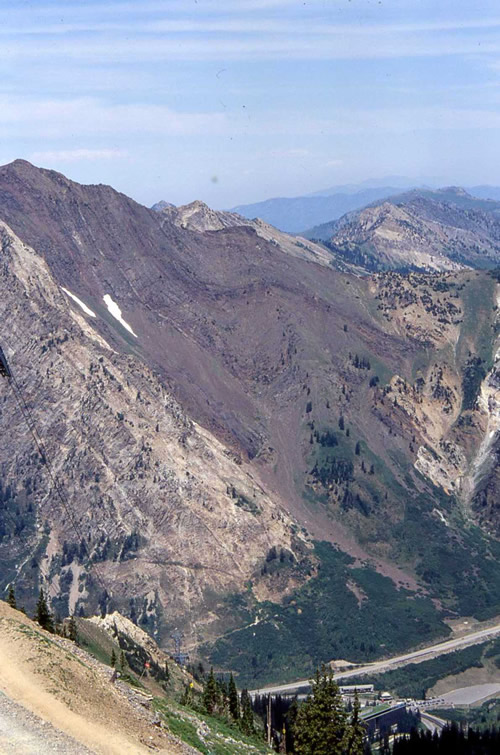
The Paleozoic sediments at Alta were folded, faulted and fractured during at least four periods of mountain building. These are referred to as the Antler, Sevier, Laramide and Wasatch orogenies (mountain building events). The three earlier mountain building events resulted in compression and folding of the rocks, folding that is well preserved in the Little […]
